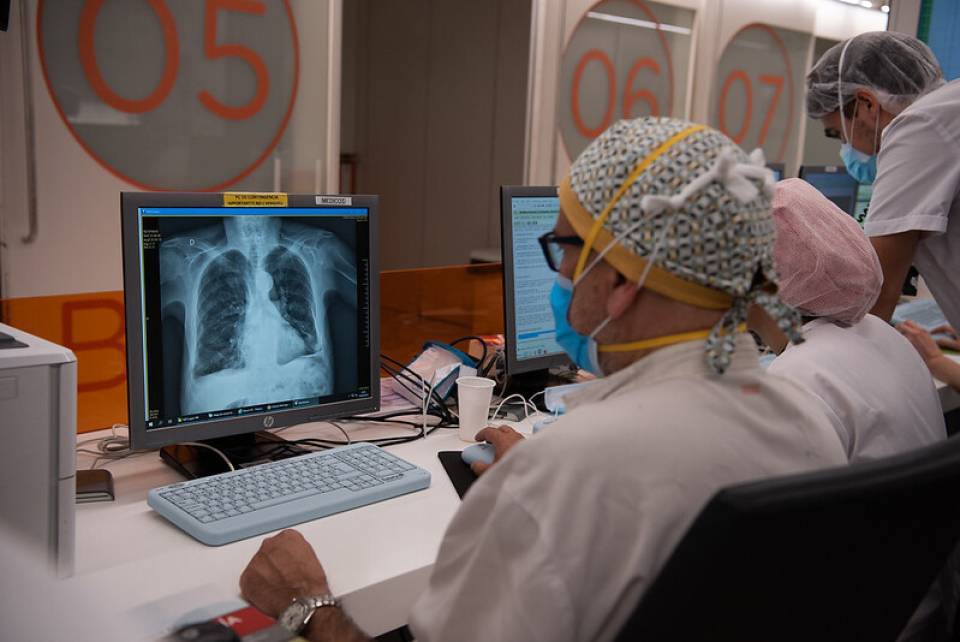30 December 2024
Frequently Asked Questions about Sexually Transmitted Infections
STIs are primarily transmitted during penetrative sexual intercourse (whether it is vaginal, anal, or even in relations based exclusively on oral sex). What is more, some STIs can also be transmitted through sexual contact without penetration (through skin/mucous membrane–skin/mucous membrane contact); by sharing toys or material used during sexual intercourse; and from mother to child, if a woman is infected before or during pregnancy (this is called vertical transmission).
The spread of many STIs can be prevented through the use of barrier methods (male and female condoms or latex dental dams) during penetrative sex and also oral sex.
Condoms do not guarantee complete protection against some common STIs, such as human papillomavirus or genital herpes, which are spread by skin–skin contact. Nevertheless, it has been demonstrated that the use of a barrier method significantly reduces the spread of these infections.
Other methods that help reduce the risk of contracting an STI are: limit the number of sexual partners; avoid sexual relationships with anonymous or unknown partners; avoid having sex under the effect of certain drugs; do not share material that punctures or cuts (syringes, needles, razors, etc.) with other people; use disposable or sterilised material to perforate the skin (tattoos or piercings); do not share unsterilised sex toys or cover them with a condom before each use; get vaccinated against some STIs: HAV, HBV and HPV.
Many people carrying a sexually transmitted infection either do not have any symptoms or only present very mild ones. Generally, STIs pass unnoticed more often in women (they present less symptoms). That is why STIs are often diagnosed later in women.
Sometimes the tell-tale symptoms of an STI appear days or months after infection: however, the appearance of ulcers on the genitals, perianal area or mouth and adenopathies in the groin (swollen lymph glands presenting as a tender or painless lump); in women, thick or foul-smelling vaginal discharge, stinging or pain when urinating or during sexual intercourse; and in men, purulent (pus-like) discharge from the urethra, pain or stinging when urinating are all signs that suggest the presence of an STI. For people who engage in anal sex, rectal pain or rectal discharge of pus, mucus or blood should lead to the suspicion of an STI.
If you believe you may have one of these infections, then you should visit your health centre and discuss it with your primary care doctor. Less serious STIs, such as genital warts or condylomas, repeat episodes of genital herpes, trichomonas, crabs or scabies, can be treated at Gynaecological or Dermatological clinics according to a scheduled basis (by making an appointment).
There is a handful of reference centres in Catalonia specialising in the treatment of sexually transmitted infections. You can check the list of centres and their location on the interactive map.
Most tests used to detect STIs are quick, straightforward and painless. What is more, some STIs can be diagnosed through a simple physical examination, without having to perform any tests.
A blood test, a urine sample, or fluids or cells from the genital/oral/anal mucous membrane can be used to diagnose most STIs.
Yes; women can be infected with an STI at any time during the menstrual cycle.
It is impossible to tell from someone’s physical appearance whether or not they have an infection and, as mentioned earlier, many STIs may produce very few signs and symptoms so infected people are often unaware of their infection.
Yes; both cases involve risk because there is mucous membrane–mucous membrane contact and sometimes also fluid contact.
No; although some infections are more common or produce more symptoms in men or women, all STIs affect both sexes.
No; other infections can also become chronic over time, for example hepatitis B or C, genital herpes or human papillomavirus.
Yes; STIs can be contracted or transmitted whenever there is any contact between blood, semen or vaginal discharge. The liquid that emerges from the penis before ejaculation can also represent a means of transmitting infections.
Yes; these parasites can reproduce in hair roots. What is more, shaving the genitals promotes the spread of certain STIs such as genital warts.
STIs transmitted by blood can also be spread while getting a piercing or tattoo (or during any other type of intervention) carried out in the absence of all the necessary hygiene measures. If you want to get a piercing or tattoo, you must be aware of these risks and ensure it is done according to the highest standards of safety.
You must visit your gynaecologist as soon as possible to either rule out any infection or assess the need for treatment. If it cannot be diagnosed immediately, then you should not engage in sexual activity until the specialist indicates otherwise.
Treatments are available to prevent infection with HIV or hepatitis B virus if they are administered within hours of the potentially infectious contact with the infected person (they may be effective up to 3 days after contact). These treatments can also be administered during pregnancy.
In the case of a sexual partner with HIV, the use of a condom throughout the entire pregnancy is recommended, even if the infected person is receiving antiretroviral therapy and has a well-controlled viral load. Pregnancy is a period of increased risk of contracting an STI and could involve a high risk of transmission to the baby.
Substantiated information by:




Published: 20 February 2018
Updated: 20 February 2018
Subscribe
Receive the latest updates related to this content.
Thank you for subscribing!
If this is the first time you subscribe you will receive a confirmation email, check your inbox


